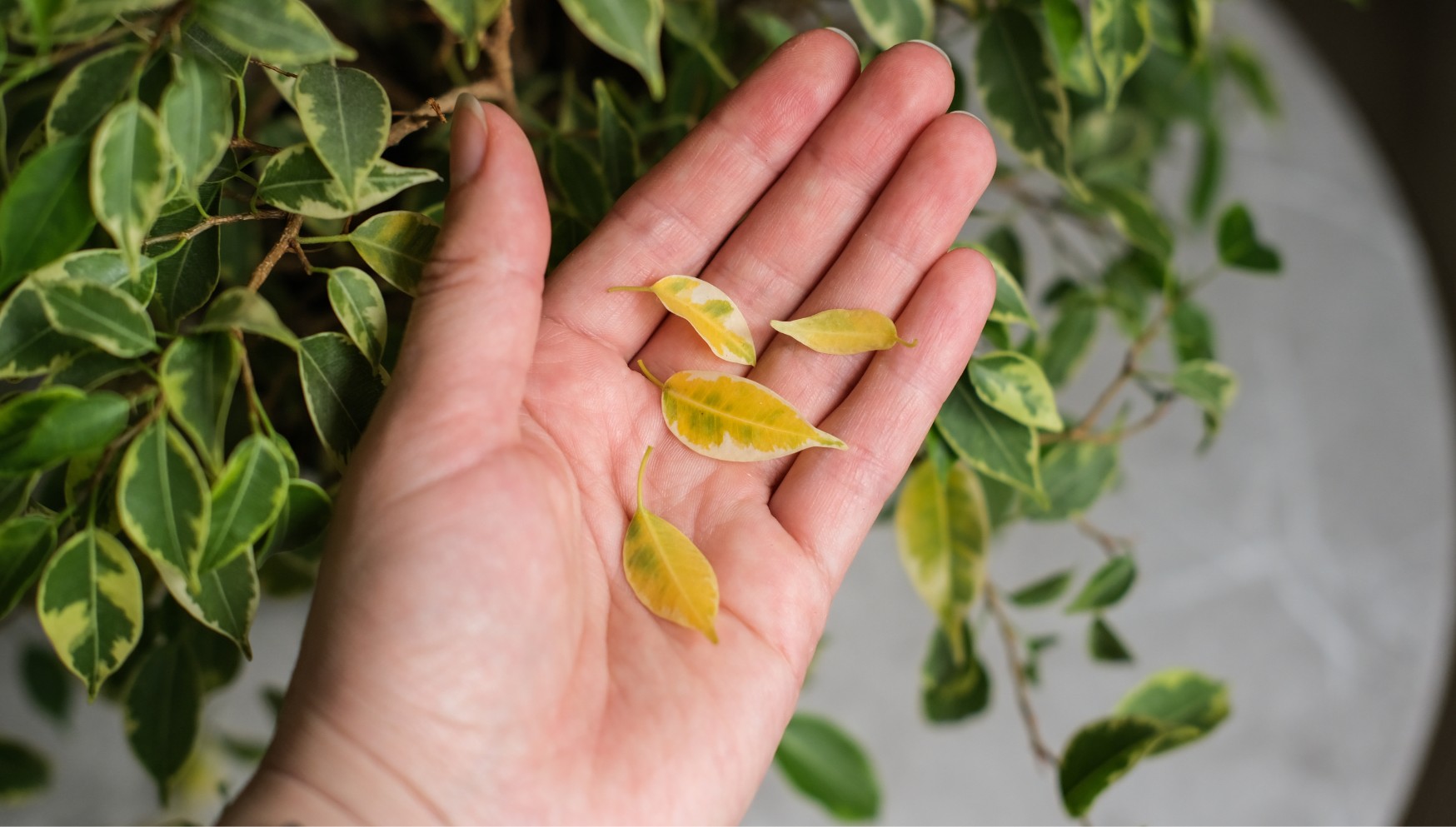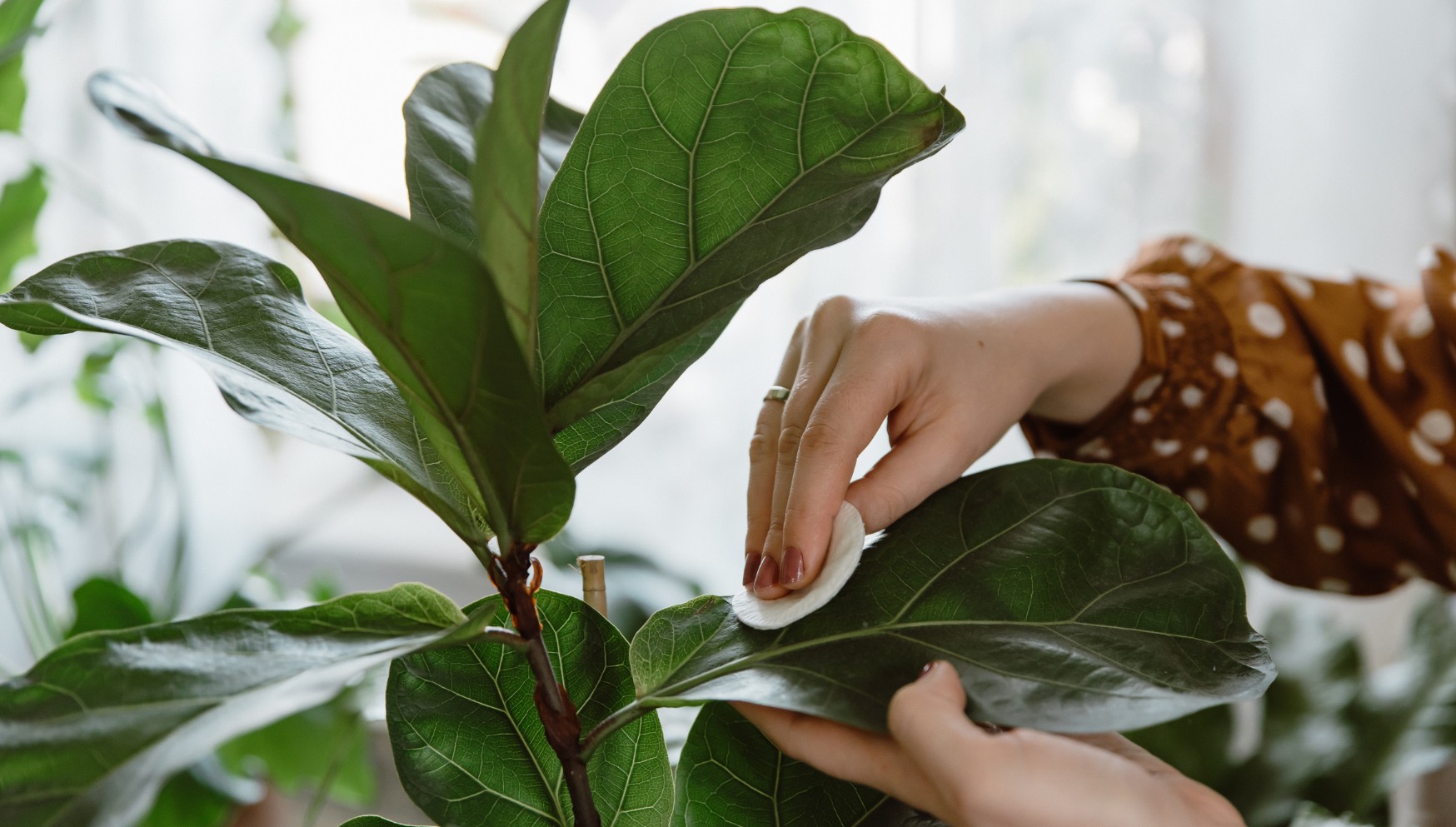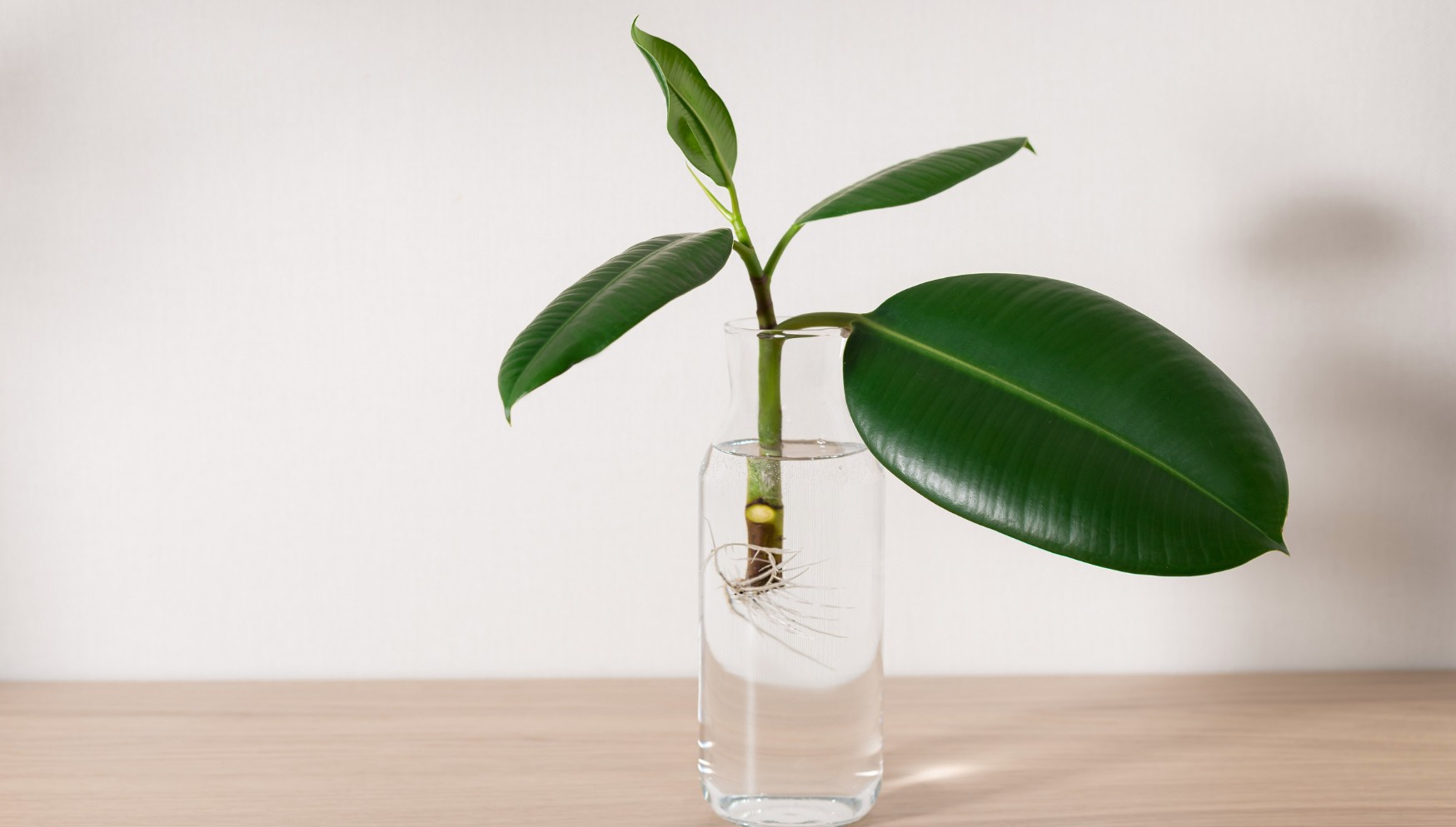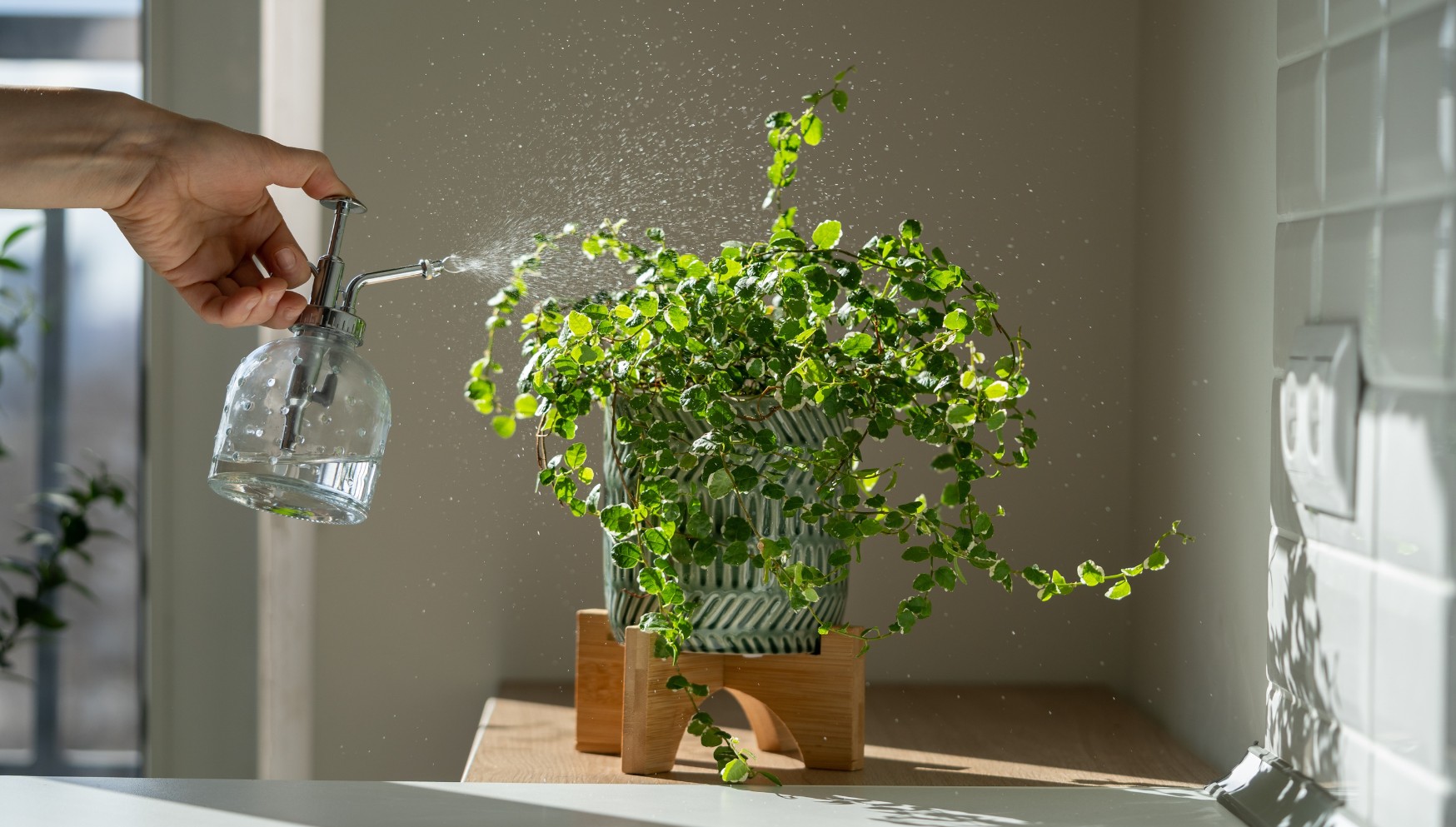Ficus plant care in pots can be a rewarding experience, enhancing your living space with vibrant greenery. At CARS.EDU.VN, we understand the importance of creating a thriving indoor environment. This guide will provide you with comprehensive strategies for ensuring your potted ficus thrives, covering everything from optimal watering techniques to selecting the perfect container. Whether you’re a seasoned plant enthusiast or just starting your indoor garden, mastering ficus care in pots will bring lasting beauty and improve your indoor air quality.
1. Understanding Ficus Varieties for Potted Growth
The Ficus genus offers an array of stunning options ideal for growing in pots. Knowing their unique characteristics is crucial for providing the best care. Whether you prefer the bold, textured leaves of the Fiddle Leaf Fig or the graceful, weeping habit of the Weeping Fig, understanding each variety’s specific requirements ensures a thriving indoor garden. Let’s explore some popular ficus varieties perfect for containers:
- Fiddle Leaf Fig (Ficus Lyrata): Known for its large, violin-shaped leaves, this variety requires bright, indirect light and consistent moisture levels.
- Rubber Plant (Ficus Elastica): With its glossy, dark green leaves, the Rubber Plant tolerates lower light conditions and is relatively drought-tolerant.
- Weeping Fig (Ficus Benjamina): This elegant ficus features delicate, weeping branches and prefers bright, indirect light and consistent watering.
- Banyan Fig (Ficus Benghalensis): Distinguished by its aerial roots and broad leaves, the Banyan Fig needs plenty of space and bright light.
2. Choosing the Right Pot and Soil for Your Ficus
Selecting the correct pot and soil is fundamental for the well-being of your ficus plants. The pot size, material, and drainage capabilities play a crucial role in supporting healthy root development and preventing common issues such as root rot. Similarly, the right soil mix provides essential nutrients and ensures proper aeration and drainage. Let’s explore how to make the best choices for your potted ficus:
- Pot Size: Select a pot that is slightly larger than the current root ball to allow for growth.
- Pot Material: Terracotta pots promote better aeration, while plastic pots retain moisture longer.
- Drainage: Ensure the pot has adequate drainage holes to prevent waterlogging.
- Soil Mix: Use a well-draining potting mix consisting of loam, peat moss, and perlite or vermiculite.
- pH Level: Aim for a soil pH between 6.0 and 6.5 for optimal nutrient absorption.
3. Mastering the Art of Ficus Watering
Watering is a delicate balance when it comes to ficus plants in pots. Overwatering can lead to root rot, while underwatering can cause leaf drop. Understanding the specific needs of your ficus variety and the environmental conditions in your home is essential for maintaining the right moisture level. Here’s how to perfect your watering routine:
- Check Soil Moisture: Water when the top half of the soil feels dry to the touch.
- Watering Technique: Water thoroughly until excess water drains from the bottom of the pot.
- Water Temperature: Use room-temperature water to avoid shocking the roots.
- Frequency: Adjust watering frequency based on the season, temperature, and humidity levels.
- Drainage: Always empty the drainage tray to prevent roots from sitting in water.
- Signs of Overwatering: Yellowing leaves, soggy soil.
- Signs of Underwatering: Drooping leaves, dry soil.
4. Providing Optimal Lighting Conditions
Ficus plants thrive in bright, indirect light. Proper lighting is essential for photosynthesis and overall health. Insufficient light can lead to leggy growth and leaf drop, while too much direct sunlight can scorch the leaves. Understanding how to provide the right amount of light will keep your ficus happy and vibrant.
- Ideal Light: Bright, indirect light is best.
- Direct Sunlight: Avoid prolonged exposure to direct sunlight.
- Light Meter: Use a light meter to measure light intensity.
- Signs of Insufficient Light: Leggy growth, small leaves.
- Signs of Too Much Light: Scorched leaves, faded color.
- Artificial Light: Supplement with grow lights if natural light is insufficient.
5. Maintaining the Right Temperature and Humidity
Temperature and humidity play critical roles in the health of your potted ficus. These plants prefer stable conditions, so avoiding drastic fluctuations is essential. Maintaining the right temperature and humidity levels will help prevent stress and promote healthy growth.
- Ideal Temperature: 65-75°F (18-24°C) during the day and 60-65°F (16-18°C) at night.
- Temperature Fluctuations: Avoid sudden changes in temperature.
- Ideal Humidity: 40-60% relative humidity.
- Humidity Enhancement: Use a humidifier, pebble tray, or misting to increase humidity.
- Signs of Low Humidity: Brown leaf tips, leaf drop.
- Drafts: Keep ficus away from drafts and vents.
6. Fertilizing Your Ficus for Healthy Growth
Regular fertilization provides your ficus with the necessary nutrients to thrive. Knowing when and how to fertilize is crucial for promoting healthy growth and vibrant foliage. Over-fertilizing can harm the plant, so it’s important to follow a balanced approach.
- Fertilizer Type: Use a balanced, water-soluble fertilizer (e.g., 20-20-20).
- Fertilizing Season: Fertilize during the active growing season (spring and summer).
- Fertilizing Frequency: Fertilize every 4-6 weeks.
- Dilution: Dilute the fertilizer to half strength to avoid over-fertilizing.
- Application: Apply fertilizer after watering the plant.
- Signs of Over-Fertilizing: Leaf burn, white crust on soil.
7. Pruning and Shaping Your Ficus Plant
Pruning is essential for maintaining the shape, size, and health of your ficus plant. Regular pruning encourages new growth and prevents the plant from becoming too leggy or overgrown. Knowing how to prune properly will keep your ficus looking its best.
- Pruning Season: Prune during the dormant season (late winter or early spring).
- Pruning Tools: Use clean, sharp pruning shears.
- Pruning Technique: Remove dead, damaged, or crossing branches.
- Shaping: Prune to maintain the desired shape and size.
- Encouraging Growth: Prune above a leaf node to promote new growth.
- Removing Suckers: Remove any suckers growing from the base of the plant.
8. Repotting Your Ficus to Encourage Growth
Repotting is necessary when your ficus outgrows its current container or when the soil becomes depleted of nutrients. Repotting provides fresh soil and more room for the roots to grow, promoting overall health and vigor.
- Repotting Frequency: Repot every 1-2 years or when the plant becomes root-bound.
- Pot Size: Choose a pot that is 1-2 inches larger in diameter than the current pot.
- Repotting Season: Repot during the spring or early summer.
- Soil Mix: Use a well-draining potting mix.
- Repotting Technique: Gently remove the plant from the old pot, loosen the root ball, and place it in the new pot with fresh soil.
- Watering After Repotting: Water thoroughly after repotting.
9. Identifying and Managing Pests and Diseases
Ficus plants can be susceptible to various pests and diseases, which can affect their health and appearance. Early detection and treatment are essential for preventing serious damage. Regularly inspecting your plant and knowing how to address common issues will keep your ficus thriving.
- Common Pests: Spider mites, mealybugs, aphids, scale.
- Common Diseases: Root rot, leaf spot.
- Pest Control: Use insecticidal soap, neem oil, or horticultural oil.
- Disease Control: Improve air circulation, avoid overwatering, and use fungicide if necessary.
- Quarantine: Isolate infected plants to prevent the spread of pests or diseases.
Table: Common Pests and Diseases on Ficus Plants
| Pest/Disease | Symptoms | Treatment |
|---|---|---|
| Spider Mites | Fine webs on leaves, yellowing leaves | Insecticidal soap, neem oil, increase humidity |
| Mealybugs | White, cottony masses on leaves and stems | Insecticidal soap, neem oil, manual removal |
| Aphids | Small, green or black insects on new growth | Insecticidal soap, neem oil, strong stream of water |
| Scale | Small, brown, shell-like insects on leaves and stems | Horticultural oil, manual removal |
| Root Rot | Yellowing leaves, wilting, soggy soil | Improve drainage, reduce watering, fungicide |
| Leaf Spot | Brown or black spots on leaves | Improve air circulation, remove affected leaves, fungicide |






10. Propagating Your Ficus to Expand Your Collection
Propagating your ficus is a great way to expand your collection or share these beautiful plants with friends and family. There are several methods of propagation, including stem cuttings and air layering. Here’s how to propagate your ficus successfully:
- Stem Cuttings:
- Take a 4-6 inch stem cutting from a healthy plant.
- Remove the lower leaves, leaving only the top few.
- Dip the cut end in rooting hormone.
- Plant the cutting in a pot with well-draining soil.
- Keep the soil moist and provide bright, indirect light.
- Roots should develop in a few weeks.
- Air Layering:
- Make a small incision in the stem.
- Apply rooting hormone to the cut area.
- Wrap the area with moist sphagnum moss.
- Cover the moss with plastic wrap and secure it with tape.
- Once roots develop, cut the stem below the rooted area and plant in a pot.
11. Addressing Common Ficus Problems
Even with the best care, ficus plants can sometimes encounter problems. Knowing how to identify and address these issues is crucial for maintaining a healthy plant. Here are some common problems and their solutions:
- Leaf Drop:
- Cause: Sudden changes in temperature, light, or humidity, overwatering, underwatering.
- Solution: Provide stable conditions, adjust watering, ensure proper drainage.
- Yellowing Leaves:
- Cause: Overwatering, nutrient deficiency, pest infestation.
- Solution: Adjust watering, fertilize, treat pests.
- Brown Leaf Tips:
- Cause: Low humidity, dry air.
- Solution: Increase humidity, mist leaves regularly.
- Leggy Growth:
- Cause: Insufficient light.
- Solution: Provide more light or supplement with grow lights.
Table: Troubleshooting Common Ficus Problems
| Problem | Possible Causes | Solutions |
|---|---|---|
| Leaf Drop | Sudden changes in environment, improper watering | Stabilize conditions, adjust watering, check drainage |
| Yellowing Leaves | Overwatering, nutrient deficiency, pests | Adjust watering, fertilize with balanced fertilizer, treat pest infestation |
| Brown Leaf Tips | Low humidity, dry air | Increase humidity with humidifier or pebble tray, mist leaves regularly |
| Leggy Growth | Insufficient light | Move plant to brighter location, supplement with grow lights |
12. Ficus Varieties Showcase: Beauty in Pots
Let’s take a closer look at some specific ficus varieties that thrive in pots, highlighting their unique care requirements and aesthetic appeal. Understanding these nuances will help you choose the perfect ficus for your home and provide tailored care.
- Ficus Elastica (Rubber Plant)
- Description: Known for its glossy, dark green or burgundy leaves, the rubber plant adds a touch of elegance to any space.
- Care Tips: Provide bright, indirect light and allow the soil to dry out slightly between waterings.
- Ficus Benjamina (Weeping Fig)
- Description: With its graceful, weeping branches and delicate leaves, the weeping fig is a classic choice for indoor environments.
- Care Tips: Prefers bright, indirect light and consistent watering. Avoid sudden changes in temperature or light.
- Ficus Lyrata (Fiddle Leaf Fig)
- Description: The fiddle leaf fig boasts large, violin-shaped leaves that make a bold statement.
- Care Tips: Requires bright, indirect light and well-draining soil. Water when the top inch of soil is dry.
- Ficus Microcarpa (Ginseng Ficus)
- Description: The ginseng ficus features a unique, bulbous trunk and small, oval leaves.
- Care Tips: Prefers bright, indirect light and moderate watering. Prune regularly to maintain its shape.
- Ficus Pumila (Creeping Fig)
- Description: The creeping fig is a vining plant with small, heart-shaped leaves, perfect for hanging baskets or climbing structures.
- Care Tips: Prefers bright, indirect light and consistently moist soil. Provide support for climbing.
Table: Ficus Varieties for Potted Growth
| Variety | Description | Care Tips |
|---|---|---|
| Ficus Elastica | Glossy, dark green leaves | Bright, indirect light; allow soil to dry slightly between waterings |
| Ficus Benjamina | Graceful, weeping branches and delicate leaves | Bright, indirect light; consistent watering; avoid sudden changes in environment |
| Ficus Lyrata | Large, violin-shaped leaves | Bright, indirect light; well-draining soil; water when top inch of soil is dry |
| Ficus Microcarpa | Bulbous trunk and small, oval leaves | Bright, indirect light; moderate watering; prune regularly |
| Ficus Pumila | Vining plant with small, heart-shaped leaves | Bright, indirect light; consistently moist soil; provide support for climbing |
13. Incorporating Ficus into Your Home Decor
Ficus plants are not only beneficial for your indoor air quality but also versatile additions to your home decor. From minimalist apartments to cozy family homes, ficus plants can enhance any space with their natural beauty.
- Focal Points: Use a large ficus as a focal point in your living room or entryway.
- Green Walls: Create a green wall with climbing ficus varieties like the creeping fig.
- Table Centerpieces: Small ficus plants make excellent table centerpieces.
- Hanging Baskets: Display cascading ficus varieties in hanging baskets.
- Office Decor: Add a ficus to your office to improve air quality and reduce stress.
- Room Dividers: Use tall ficus plants as natural room dividers.
Ideas for Decorating with Ficus Plants
| Style | Ficus Variety Suggestion | Placement Ideas |
|---|---|---|
| Minimalist | Ficus Elastica (Rubber Plant) | Clean, modern pot in a well-lit corner |
| Bohemian | Ficus Benjamina (Weeping Fig) | Macrame hanger near a window, allowing branches to cascade |
| Modern | Ficus Lyrata (Fiddle Leaf Fig) | Sleek, geometric pot in a prominent location |
| Traditional | Ficus Microcarpa (Ginseng Ficus) | Ornate ceramic pot on a pedestal |
| Eclectic | Ficus Pumila (Creeping Fig) | Trained to climb a decorative trellis or spill from a vintage container |
14. Seasonal Ficus Care Adjustments
Ficus care needs to be adjusted seasonally to accommodate changes in light, temperature, and humidity. Understanding how to adapt your care routine throughout the year will ensure your ficus remains healthy and vibrant.
- Spring:
- Increase Watering: As temperatures rise and plants enter their active growing season, increase watering frequency.
- Fertilize: Begin fertilizing every 4-6 weeks.
- Repot: Repot if necessary to provide fresh soil and more room for growth.
- Summer:
- Monitor Light: Protect plants from intense direct sunlight to prevent leaf scorch.
- Maintain Humidity: Increase humidity with misting or a humidifier.
- Water Regularly: Water when the top inch of soil is dry.
- Fall:
- Reduce Watering: As temperatures cool and plants enter dormancy, reduce watering frequency.
- Stop Fertilizing: Discontinue fertilizing to allow plants to rest.
- Monitor for Pests: Check plants for pests before bringing them indoors from outdoor locations.
- Winter:
- Reduce Watering: Water sparingly, allowing the soil to dry out more between waterings.
- Maintain Humidity: Increase humidity to counteract dry indoor air.
- Provide Adequate Light: Supplement with grow lights if necessary.
Seasonal Ficus Care Calendar
| Season | Key Adjustments |
|---|---|
| Spring | Increase watering, fertilize, repot |
| Summer | Monitor light, maintain humidity, water regularly |
| Fall | Reduce watering, stop fertilizing, check for pests |
| Winter | Reduce watering, maintain humidity, provide light |
15. Frequently Asked Questions About Ficus Care in Pots
- How often should I water my ficus plant?
- Water when the top half of the soil feels dry to the touch.
- What kind of light does a ficus plant need?
- Ficus plants prefer bright, indirect light.
- Why are the leaves on my ficus plant turning yellow?
- Yellowing leaves can be caused by overwatering, nutrient deficiency, or pest infestation.
- Why is my ficus plant dropping leaves?
- Leaf drop can be caused by sudden changes in temperature, light, or humidity, as well as overwatering or underwatering.
- How do I increase humidity for my ficus plant?
- Use a humidifier, pebble tray, or mist the leaves regularly.
- When should I repot my ficus plant?
- Repot every 1-2 years or when the plant becomes root-bound.
- How do I propagate a ficus plant?
- Ficus plants can be propagated through stem cuttings or air layering.
- What are common pests that affect ficus plants?
- Common pests include spider mites, mealybugs, aphids, and scale.
- How do I fertilize my ficus plant?
- Use a balanced, water-soluble fertilizer every 4-6 weeks during the growing season.
- Can I put my ficus plant outside?
- Yes, you can put your ficus plant outside in the summer, but protect it from direct sunlight and bring it back inside before temperatures drop.
16. Advanced Ficus Care Techniques
For those looking to take their ficus care to the next level, here are some advanced techniques to consider:
- Air Pruning: Encourage a healthier root system by using pots designed for air pruning. These pots have holes that allow air to reach the roots, causing them to prune themselves, resulting in a denser, more robust root system.
- Bonsai Training: Transform your ficus into a stunning bonsai by carefully pruning and shaping it over time. This requires patience and skill but can result in a unique and beautiful plant.
- Hydroponics: Grow your ficus in a hydroponic system for faster growth and more efficient nutrient absorption. This method involves growing plants without soil, using a nutrient-rich water solution.
- Custom Soil Blends: Create a custom soil blend tailored to the specific needs of your ficus variety. Experiment with different ratios of ingredients like coco coir, perlite, and worm castings to optimize drainage and nutrient availability.
- Grafting: Combine desirable traits from different ficus varieties by grafting them together. This technique involves joining two plants to grow as one, allowing you to create unique and interesting combinations.
17. CARS.EDU.VN: Your Partner in Ficus Care
At CARS.EDU.VN, we are committed to providing you with the most comprehensive and reliable information for caring for your ficus plants in pots. Our team of experts is dedicated to helping you create a thriving indoor garden. If you need further assistance or have specific questions, don’t hesitate to reach out. We are here to support you every step of the way.
How CARS.EDU.VN Can Help
- Expert Advice: Access our extensive library of articles and guides on ficus care.
- Community Forum: Connect with other plant enthusiasts and share your experiences.
- Personalized Consultations: Schedule a one-on-one consultation with our plant care specialists.
- Product Recommendations: Discover the best pots, soil, and tools for ficus care.
- Workshops and Events: Participate in our workshops and events to learn from experts and connect with fellow plant lovers.
18. The Joy of Growing Ficus Plants
Growing ficus plants in pots is not just a hobby; it’s a rewarding experience that brings beauty, tranquility, and improved air quality to your home. With the right knowledge and care, you can enjoy the many benefits of these magnificent plants for years to come.
Benefits of Growing Ficus Plants
- Improved Air Quality: Ficus plants help to purify indoor air by removing toxins.
- Stress Reduction: Caring for plants can be a therapeutic and stress-reducing activity.
- Enhanced Aesthetics: Ficus plants add a touch of natural beauty to any space.
- Increased Humidity: Plants release moisture into the air, increasing humidity levels.
- Sense of Accomplishment: Successfully growing and caring for plants provides a sense of accomplishment and satisfaction.
- Connection with Nature: Even indoors, plants help you feel connected to nature.
Embrace the journey of ficus care, and let these stunning plants transform your living space into a green oasis.
Are you struggling to find reliable information on caring for your ficus plants? Do you find it challenging to diagnose and address common issues like leaf drop, yellowing leaves, or pest infestations? At CARS.EDU.VN, we understand these challenges and are here to help. Visit CARS.EDU.VN today to access detailed guides, expert advice, and a supportive community that will empower you to grow thriving ficus plants in pots.
Contact Us:
- Address: 456 Auto Drive, Anytown, CA 90210, United States
- WhatsApp: +1 555-123-4567
- Website: cars.edu.vn